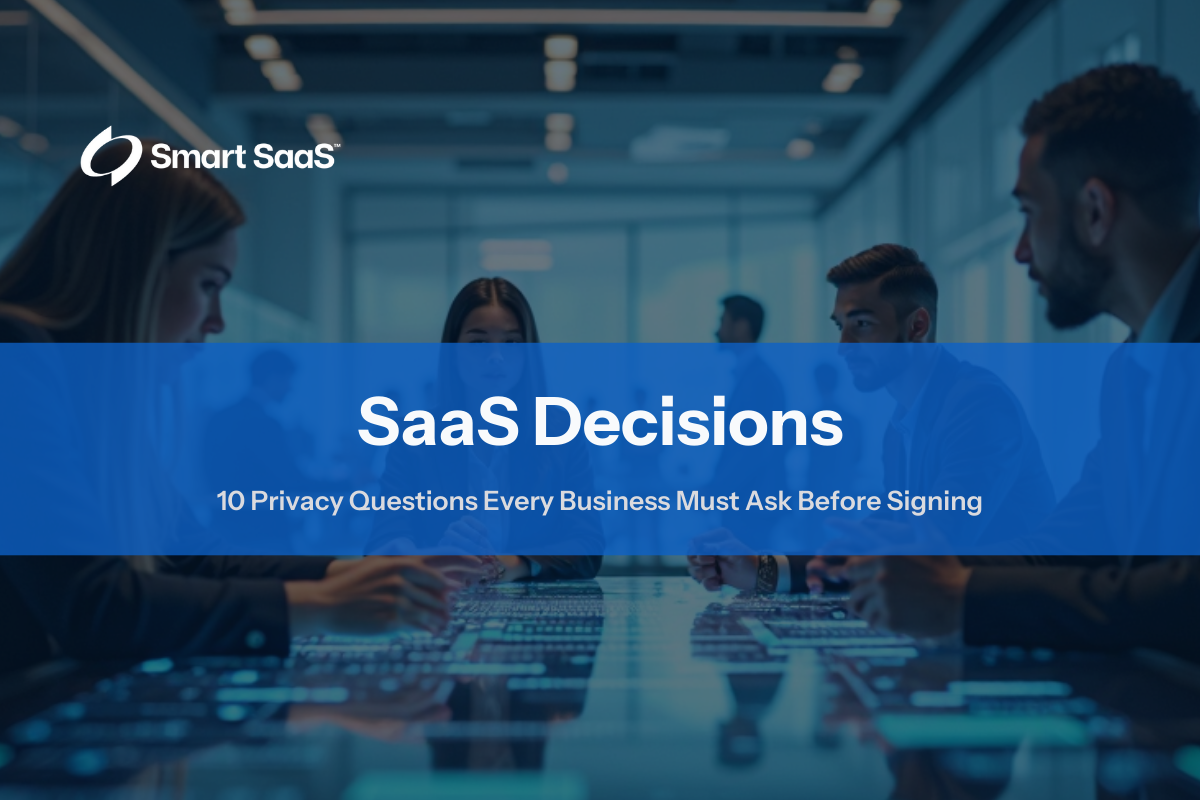

Wednesday, April 16, 2025
Kevin Anderson
The SaaS landscape is vast, fast‑moving, and full of promises—from productivity boosts to AI‑powered insights. But beneath the slick interfaces and onboarding ease lies a truth many companies learn the hard way: if you don’t ask the right privacy questions upfront, you may pay for it later—in compliance costs, security risks, or brand damage. In the age of cloud‑first infrastructure, smart SaaS decisions require more than feature comparisons.
They demand a privacy‑first mindset and a clear framework for due diligence. Below are 10 critical privacy questions every business must ask before adopting a new SaaS tool—backed by insights from Data Privacy in the SaaS Era.

Almost every SaaS provider says, “You own your data.” But ownership means little without clarity on access, control, and usage rights.
Ask your vendor:
Insight from the eBook: Simple language like “you retain ownership” is often undermined by vague T&Cs that grant the provider broad usage rights. Align ownership clauses with explicit segregation and portability guarantees, similar to the guidance in SaaS Data Ownership and Portability.
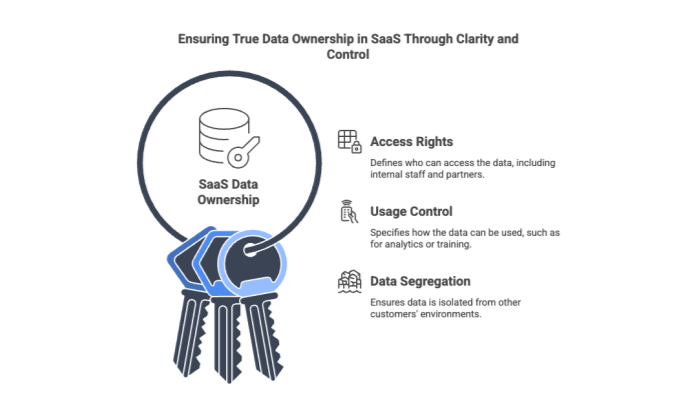

Vendor lock‑in is one of the most frustrating and risky realities in SaaS. Without clear portability and deletion policies, switching providers—or complying with regulations—becomes painful.
Ask:
Pro Tip: Include deletion timelines and export guarantees in your contract or DPA. See how vertical SaaS platforms often provide easier export APIs because of industry‑specific compliance requirements.
Building a deletion SLA into the procurement process not only mitigates risk but also strengthens keywords around “SaaS data deletion policy,” aiding organic discoverability.
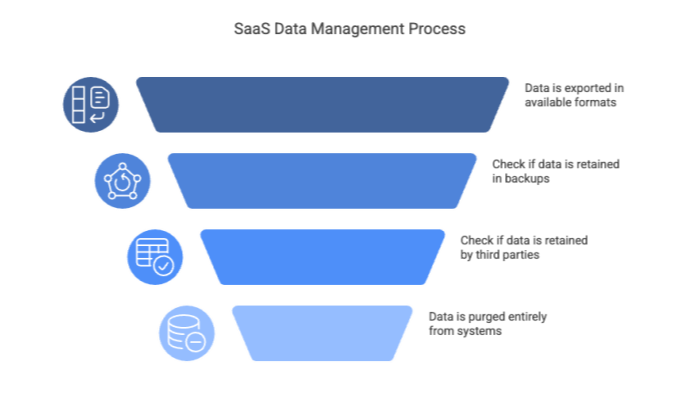

Retention policies vary widely between providers. Some platforms auto‑delete data after periods of inactivity; others retain indefinitely unless requested otherwise.
Ask:
Example from the eBook: Asana deletes “inactive work data” based on internal definitions—this might not align with your operational needs. For highly regulated sectors, map retention terms to frameworks like continuous security monitoring policies.
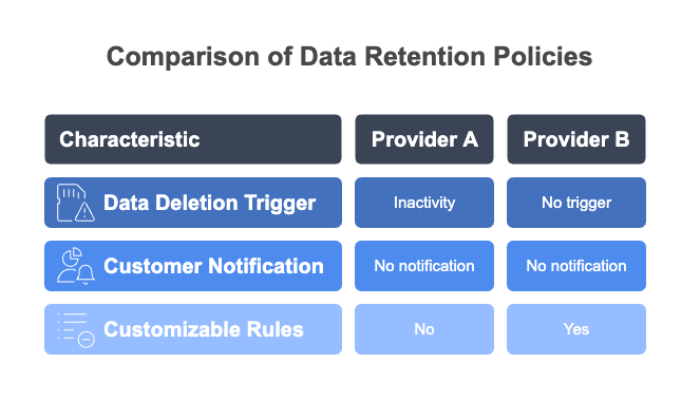

Knowing the physical location of your data matters. It determines which laws apply and, in some cases, whether you’re even compliant.
Ask:
Data Sovereignty Insight: Storage in another jurisdiction may subject your data to foreign government access under laws like the U.S. CLOUD Act. Align storage with strategies outlined in SaaS Data Sovereignty.
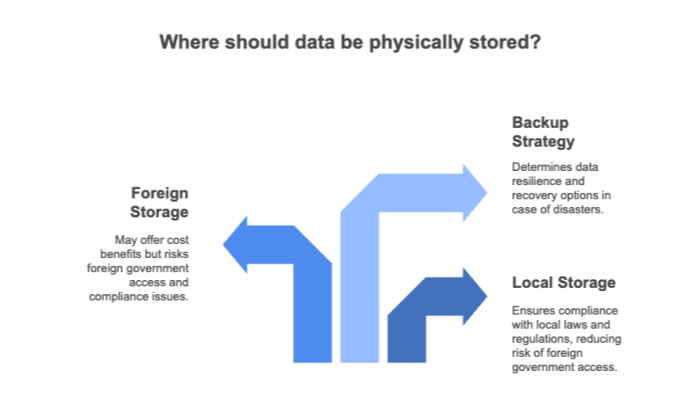

If your vendor can’t demonstrate compliance with GDPR, CCPA, HIPAA, or other applicable frameworks, consider it a red flag.
Ask:
Bonus Tip: Have legal counsel review the DPA for hidden liability gaps. Compare certification scopes with SaaS security standards to ensure consistency.


This is where many vendors get creative with language. “We don’t sell your data” is often followed by, “...but we may share it with partners for business operations.”
Ask:
Case Study: PayPal and Shopify both claim not to “sell” data—yet share it with advertisers. Definitions matter. Get specifics.
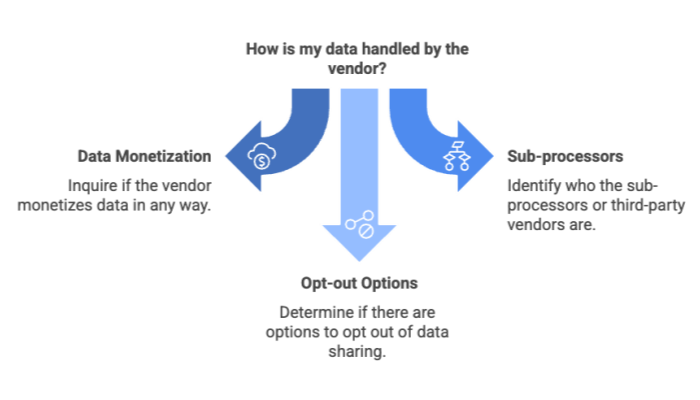

Even if your vendor has the right policies, they mean little without enforceable controls built into the platform.
Ask:
From the eBook: Granular access control is non‑negotiable, especially in multi‑user SaaS environments. Evaluate features alongside SaaS security tools that monitor policy drift.
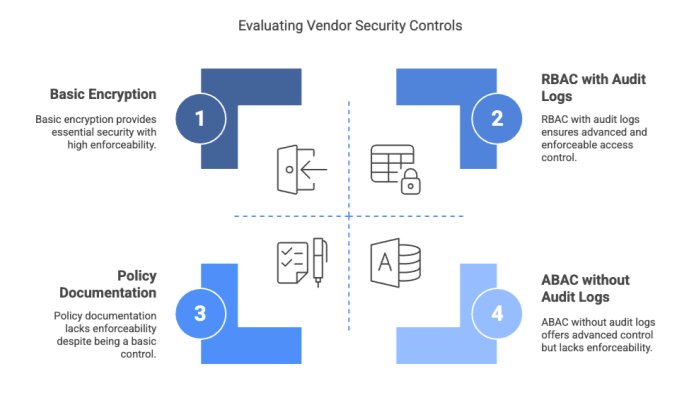

Many businesses focus on onboarding—but ignore offboarding. Without contractual clarity, your data could be inaccessible, orphaned, or even exposed.
Ask:
Critical Clause: Your exit terms should define timelines, formats, costs, and deletion guarantees. Align exit clauses with the cost insights outlined in B2B SaaS Fees to avoid unexpected migration charges.


Your vendor’s team has access to your environment—often for support, testing, or analytics. But who’s watching them?
Ask:
Security ≠ Privacy: Encryption won’t help if an under‑trained support rep downloads your customer database. Ensure staff vetting mirrors controls discussed in SaaS security challenges.
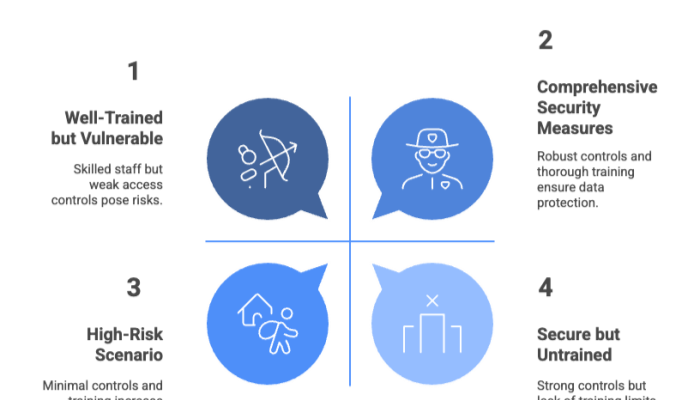

Breach notification timelines vary. Some vendors delay disclosure to assess legal exposure. That delay could cost you—legally and reputationally.
Ask:
From the eBook: Transparency is key to trust. Delayed disclosure signals immaturity—or worse, avoidance. Compare incident policies with transparency guidelines from SaaS security concern research.
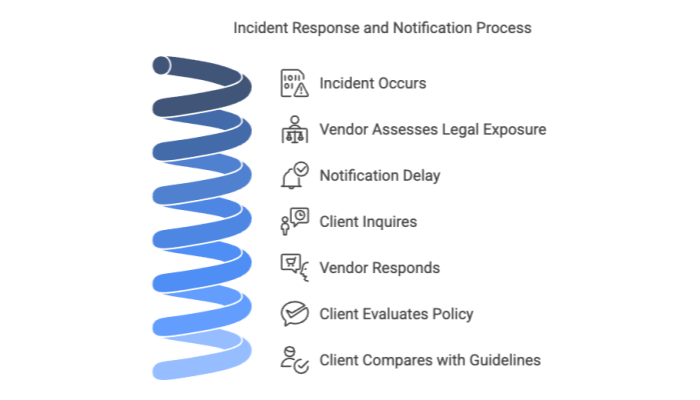

Embed this list into your SaaS procurement workflow. Require written responses before onboarding any vendor. Use these questions during contract renewals to validate existing relationships. Optional Step: publish your own internal “SaaS Privacy Standards” and share them with vendors.
SaaS Can Be Smart—If You Ask Smart Questions
SaaS solutions shouldn’t come with privacy trade‑offs. Yet many businesses rush into adoption without the right conversations. This list empowers your team to slow down, ask smarter, and build a tech stack that respects your data, your customers, and your compliance needs.
Don’t stop at questions—get the full picture. Download the eBook: Data Privacy in the SaaS Era. It includes templates, checklists, and in‑depth guidance for building a privacy‑first SaaS stack.
